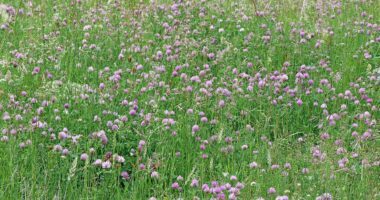By 1808Delaware
The Ohio Wildlife Center, a local beacon of hope for the several of the state’s native species, recently released its 2022 Annual Report.
The report provides a comprehensive look into the center’s operations, from wildlife rehabilitation to conservation education. With nearly 8,000 animals admitted annually, the center is the largest nonprofit wildlife hospital in Ohio. It offers a range of services, including a veterinary hospital, several offsite locations managed by volunteers, and an outdoor Pre-Release Facility. The center’s mission is to provide care to wild animals at no cost to the individuals who bring them in, whether they are rescued from car collisions or entangled in debris.
Here’s a quick look inside.
SCRAM! A Humane Approach to Wildlife Control
One of the standout programs at the Ohio Wildlife Center is SCRAM! Wildlife Control. This initiative offers a non-lethal eviction and exclusion service for unwanted wildlife in both residential and commercial properties. SCRAM! serves as a humane alternative to lethal solutions, providing a win-win situation for both humans and animals. The program also generates additional income to support the center’s rehabilitation work, making it a sustainable model for wildlife management.
Building a Bridge Between Humans and Wildlife
The Ohio Wildlife Center believes that education is the key to preventing harm to local wildlife. Through various programs, the center welcomes families, schools, Scouts, and other nonprofits to engage in interactive experiences. These programs often feature the center’s Animal Ambassadors, who serve as living examples of the importance of wildlife conservation. Whether you visit the center or invite their team to your location, the educational programs aim to foster a sense of responsibility and compassion for local wildlife.
Financial Health and Future Prospects
The Ohio Wildlife Center’s financial report reveals a total revenue, gains, and other support amounting to $1,405,613.00 for the year 2022. The center received support contributions of $260,186.00 and animal care contributions of $549,863.00. Additional revenue streams included grants, education programs, and other income. Despite a total operating expense of $1,672,979.00, the center remains steadfast in its mission, with net assets ending at $3,735,148.00.
The report also highlights the center’s commitment to innovation, with investments in an in-house diagnostics laboratory and specialized diets for the animals. These advancements are expected to improve the quality of care and contribute to the center’s long-term sustainability.
A Snapshot of Ohio’s Biodiversity
Ohio is home to a rich array of wildlife, and the Ohio Wildlife Center’s report provides a snapshot of this diversity. In 2022, the center admitted a total of 7,903 patients, representing 189 species. These ranged from amphibians like toads and treefrogs to mammals such as white-tail deer and raccoons. Birds were also well-represented, with species like hawks, eagles, and vultures among the patients.
The report serves as a testament to the center’s unwavering commitment to wildlife conservation and education. As the center moves forward, it continues to be a sanctuary for Ohio’s diverse wildlife, a hub for conservation education, and a model for humane wildlife management.
For those interested in delving deeper into the Ohio Wildlife Center’s 2022 Annual Report, it can be accessed here.










